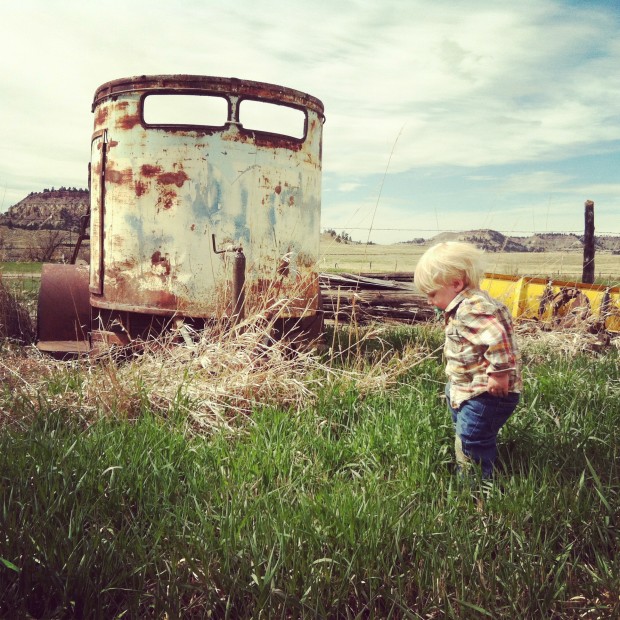We have much more to do and your continued support is needed now more than ever.
What Voice Do We Have?: Environmental justice and the Tongue River Railroad
On Wednesday evening, the auditorium of the St. Labre School in Ashland, Montana was packed. Northern Cheyenne tribal members, land owners, ranchers and hunters came to the third public scoping hearing on the Tongue River Railroad (TRR) and told the Surface Transportation Board (STB) staff that, in no uncertain terms, they do not want the railroad coming through their community. Please click here for a background on the Tongue River Railroad, here for a recap of the Monday hearing in Lame Deer and here for the recap of the Tuesday hearing in Forsyth.
To put these hearings in perspective for those of you who don’t live in eastern Montana, they are being held in very small and rural communities and the economy is primarily based on family-owned farms and ranches and wildlife-based recreation, mostly hunting.
When 75 people turn out to a public hearing on a cold Montana night in a small town, that’s a big deal.
What was the consensus in Ashland last night?
Ashland is the community that is closest to the proposed Otter Creek coal mine and would also bear the extra burden of the proposed Tongue River Railroad. This community has the most to lose from the industrialization of this quite and pristine valley.
Well, if last night was any indication, the residents in Ashland don’t want the railroad running through their community. In the packed auditorium, over 20 citizens spoke against the railroad and not ONE person stood up to support it. After every speaker, the auditorium erupted in applause.
A “Travesty”
Walter Archer, chair of the Northern Plains Resource Council, kicked the night off with the first public comment calling the whole situation a travesty. Right on his heals came Henry Coffin, a local rancher. He read the part of the Montana Constitution that says Montanan’s have a right to a “clean and healthful environment” and also a “right to defend our property.” He told them to leave the Tongue River “dead alone”. Kenneth Medicine Bull, a tribal member called it an “American tragedy.”
You can imagine where the night went from there.
This is an environmental justice issue

He said that ultimately what the Tongue River Railroad proposal boiled down to was an environmental justice issue, for both the Northern Cheyenne Tribe and the local farmers and ranchers.
As Brad pointed out, and what most American’s don’t know, he is part of the 1% of the population in the United States that produces food for the rest of the 99%. One farmer called the Tongue River Valley, the “San Joaquin of the Plains,” with amazingly long growing season and plentiful and clean water from the Tongue. In addition, the tribal communities in southeastern Montana have some of the highest poverty rates in the nation. These two groups of people will have to deal with immense impacts of this mine and rail line.
The truth comes out
These proposals have nothing to do with national energy security or economic development. This isn’t about jobs for the poor, helping Montana’s tax base or helping local schools.
This is about money. But not money for Montanans, the Northern Cheyenne or local farmers and ranchers. And the last time I checked, mule deer and elk don’t know the first thing about using money to buy food. They rely on the plentiful forage in the Tongue River Valley.
A couple of things are important to know about the Tongue River Railroad and the Otter Creek mine:
1. The companies that are proposing the Tongue River Railroad and the Otter Creek Coal Mine are owned by some of the richest men in America. A handful of people will become very rich off Montana’s natural resources while;

2. The 1% of the population who grow and raise food for the rest of the population and Native Americans will bear the brunt of the water, air, social and environmental impacts from the TRR and Otter Creek coal mine.
It’s pretty simple. A BLM study conducted during a statewide oil and gas environmental impact statement showed that historically, energy development that occurred off the reservation, although was promised to bring the Cheyenne people out of poverty, actually worsened economic conditions on the Reservation.
Closing statement
At the end of the evening, a man who came with his wife stood up and walked slowly to the front of the auditorium. He hadn’t planned on speaking and obviously just finished doing chores for the evening. His jeans were tucked into his mud boots, dirt smeared on his sweatshirt and his voice shaking slightly from nervousness.
He stood up and looked at the government bureaucrats sitting at the table in the front of the room, white lights beating down on their face and said,
“What voice do we have?”
Indeed.
What you can do to help:
Submit Comments
You can send your comments to: Ken Blodgett, Surface Transportation Board, 395 E Street, SW, Washington, D.C. 20423-0001, Environmental filing, Docket No. FD 30186. The STB also provides an online comment form.
Support National Wildlife Federation
Become a member or donate today.
Join us online in our efforts to spread the word about NWF’s Tribal Lands Partnerships
Here’s our Facebook page, or follow us on Twitter @NWFTribalLands to keep up on the lastest news.
If you need help submitting comments or want more information about the Tongue River Railroad and its impacts on wildlife, please contact me at bonogofsky@nwf.org. Stay tuned for updates about the public scoping hearings and more about the Tongue River Railroad in Part II and III.





















